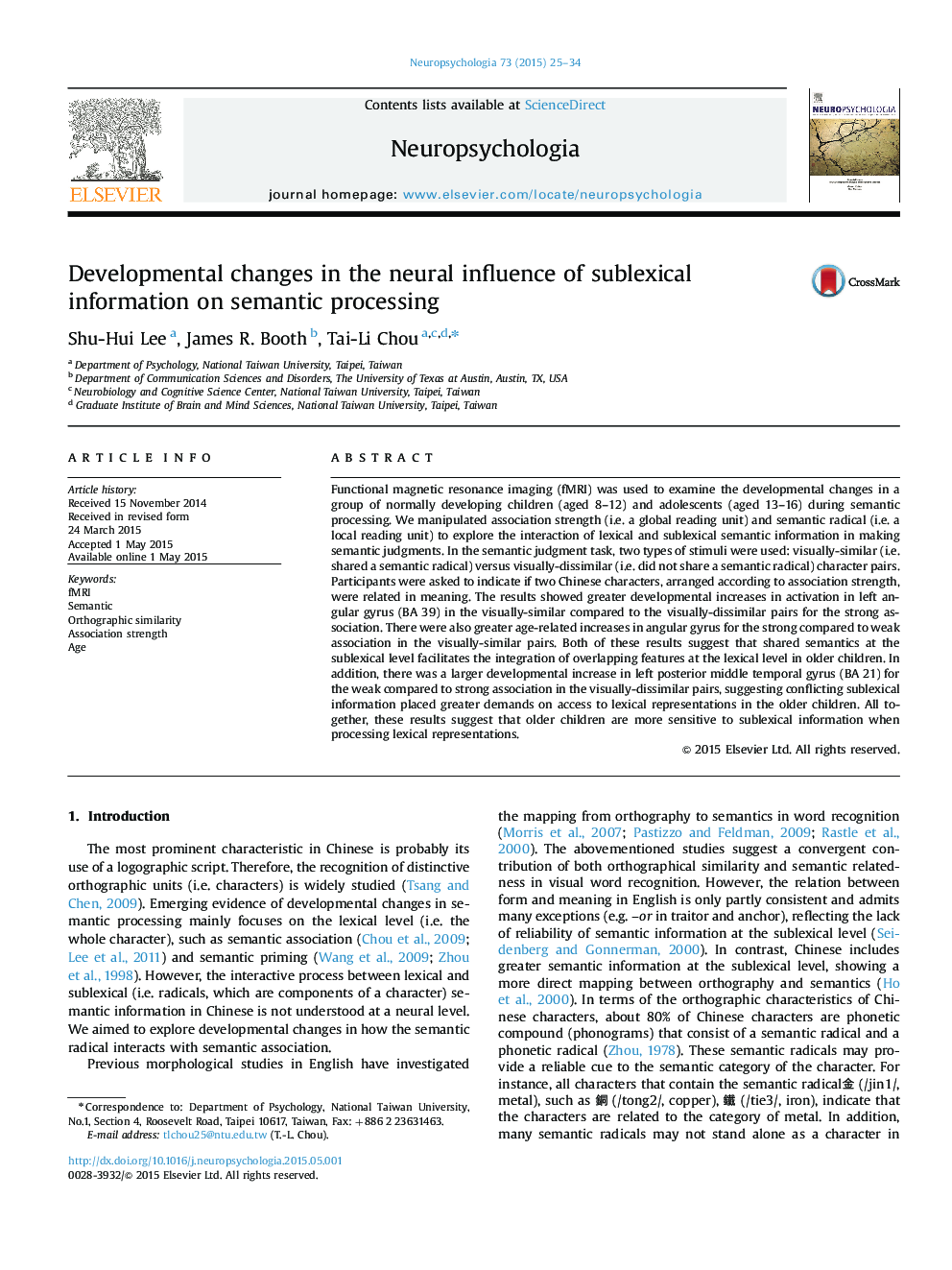| Article ID | Journal | Published Year | Pages | File Type |
|---|---|---|---|---|
| 944753 | Neuropsychologia | 2015 | 10 Pages |
•We examined how the brain constructs both lexical and sublexical level semantic information into an organized system over age.•There were greater age-related increases in left angular gyrus for visually-similar compared to the visually-dissimilar task for the strong association pairs.•There were age-related increases in left middle temporal gyrus for the weak compared to strong association pairs in the visually-dissimilar task.•Shared semantics at the sublexical level facilitates the semantic integration at the lexical level in the older children.
Functional magnetic resonance imaging (fMRI) was used to examine the developmental changes in a group of normally developing children (aged 8–12) and adolescents (aged 13–16) during semantic processing. We manipulated association strength (i.e. a global reading unit) and semantic radical (i.e. a local reading unit) to explore the interaction of lexical and sublexical semantic information in making semantic judgments. In the semantic judgment task, two types of stimuli were used: visually-similar (i.e. shared a semantic radical) versus visually-dissimilar (i.e. did not share a semantic radical) character pairs. Participants were asked to indicate if two Chinese characters, arranged according to association strength, were related in meaning. The results showed greater developmental increases in activation in left angular gyrus (BA 39) in the visually-similar compared to the visually-dissimilar pairs for the strong association. There were also greater age-related increases in angular gyrus for the strong compared to weak association in the visually-similar pairs. Both of these results suggest that shared semantics at the sublexical level facilitates the integration of overlapping features at the lexical level in older children. In addition, there was a larger developmental increase in left posterior middle temporal gyrus (BA 21) for the weak compared to strong association in the visually-dissimilar pairs, suggesting conflicting sublexical information placed greater demands on access to lexical representations in the older children. All together, these results suggest that older children are more sensitive to sublexical information when processing lexical representations.
